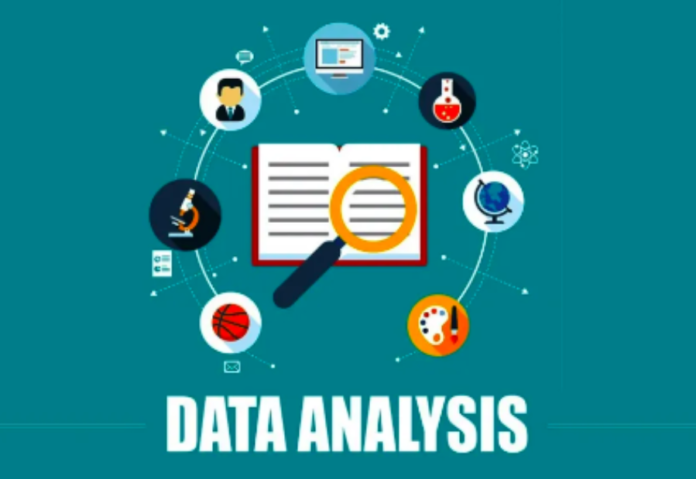The field of data analytics is always changing, and as 2025 draws near, a data analyst’s job is more important and dynamic than ever. These days, data analytics is more than simply math.
These days, data analysts are crucial in influencing choices that will affect how businesses develop in the future. They use enormous volumes of data to find previously unattainable insights.
Additionally, the need for data specialists who can handle the growing amount of data is growing at an exponential rate. We’ll include ten highly sought-after abilities in this roadmap that will help your data analyst CV stand out.
Roadmap for Data Analysts in 2025
Essential skills including statistics, Excel, presentation abilities, SQL, and BI tools are covered in our roadmap. Depending on your chosen specialization, you could need more sophisticated skills as your career as a data analyst develops.
But there’s never just one correct path forward, is there? A career in data analytics is more akin to a tree, with the foundation being the core competencies and the branches becoming more significant as you concentrate on other aspects of the discipline.
On the other hand, you may safely proclaim yourself a Data Analytics prodigy—and feel free to end this newsletter—if you already have all the abilities listed in today’s data analyst roadmap. Let’s get started right now.
Essential Skills
Statistics: Accurate data interpretation requires a strong grasp of statistics, including probability, distributions, and hypothesis testing. Regression analysis, A/B testing, confidence interval computation, and data pattern recognition are all made possible by this foundation.
Excel Proficiency: Excel is still a vital tool for analyzing, manipulating, and visualizing data. To effectively manage daily data activities, such as building financial models and producing reports, you’ll utilize Excel’s built-in functions, pivot tables, and sophisticated charting.
Learning SQL: To manage and query data in relational databases, SQL proficiency is essential. You can perform sophisticated queries, join tables for in-depth research, update records inside databases, and effectively extract, manipulate, and manage big datasets with SQL.
Data Visualization: Effectively conveying findings to stakeholders who are not technical also requires a solid basis in data visualization. Learn how to create interactive dashboards, visualize performance indicators, and depict consumer demographics using technologies like Tableau and Power BI.
Presentation Skills: Presenting quarterly performance reports, describing analytical findings to executives, and sharing ideas in team meetings are all common tasks for a data analyst. To make sure that your findings result in well-informed decision-making, you must have strong communication and presentation abilities.
Advanced Skills
Programming Skills: Learning Python or R will help you with more complex data processing, statistical analysis, and machine learning applications as you develop in your data analysis career. You can create statistical models and machine learning algorithms, automate processes, and carry out intricate computations with these abilities.
Data Cleaning and Preprocessing: Accurate analysis depends on ensuring data quality through preprocessing and cleaning. This entails handling missing numbers, eliminating duplicates, and formatting data appropriately to guarantee the accuracy and dependability of your analysis.
Advanced data handling abilities, such as fluency in SQL, are frequently needed to efficiently handle and analyze large datasets due to the enormous volumes of data generated every day.
Machine Learning Basics: Gaining a fundamental grasp of machine learning algorithms will improve your analytical skills and enable you to create predictive analysis models and find deeper insights, including predicting sales trends.
Acquiring this ability also makes it possible to proceed to the next stage of your career as a data scientist, where sophisticated machine learning methods are essential.
Big Data Tools: Scaling data analysis and processing massive datasets require technologies like Hadoop and Spark. Tools like Apache Kafka and Apache Flink are essential for managing data streams as they are generated, allowing for the effective handling of batch and real-time data projects as real-time processing gains importance.
Cloud Computing: Scalable data processing and storage depend on cloud platforms like AWS, Google Cloud, and Azure. In addition to offering tools like AWS Kinesis for real-time processing and AWS IoT Core for IoT data analysis, these platforms offer the architecture for complicated projects and guarantee effective data management in a variety of scenarios.
Emerging Trends in Data Analytics
Although data analysts need to be proficient with SQL, Excel, and BI tools, the field is changing quickly due to technology breakthroughs. Because of this, tools are always improving, and the demand for experts who can use them efficiently is rising.
The development of real-time data processing is one of the most significant advancements, allowing companies to make more rapid and current decisions. This is directly related to the increasing use of AI and machine learning in analytics, which are now necessary for automating analysis, identifying patterns that are beyond human comprehension, and making predictions.
The increasing use of cloud computing is another significant development. Platforms like AWS, Google Cloud, and Azure have developed into strong analytics centres that can manage the size and complexity of contemporary data projects. Data is also increasing due to the Internet of Things (IoT), as gadgets are producing streams of data that need to be analyzed almost instantly.
Keeping up with these trends in 2025 will open up a whole new range of professional options for data analysts.
Career Opportunities and Industry Demand
As businesses in every industry come to understand the importance of making decisions based on data, the need for qualified data analysts is only going to grow.
As a result, data analysts are playing an increasingly important role; entry-level analysts make between $65,000 and $75,000 a year, mid-level analysts make between $80,000 and $120,000, and senior analysts make between $100,000 and $150,000.
High-Demand Sectors: Pay attention to Because they require a lot of data, industries including retail, technology, healthcare, and finance are ideal for data analyst positions. Data analysts are crucial to these industries’ ability to innovate, improve client experiences, and streamline operations.
Emerging Job Roles: As the industry develops, new job titles such as “Data Engineer,” “Business Intelligence Analyst,” and “Machine Learning Analyst” are appearing. These positions offer interesting career chances for anyone wishing to specialize and progress in the sector, requiring a blend of technical know-how, industry-specific knowledge, and data analysis.
2025 Promises a Wealth of Exciting Career Opportunities for Data Analysts
In conclusion, being a data analyst in 2025 will be a rewarding and hard career path. Gaining proficiency in the fundamental and advanced abilities listed in this roadmap will prepare you to handle the ever-changing field of data analytics.
To be on the cutting edge of this always changing sector, keep up with new developments and continue learning new abilities. For those who are prepared to take advantage of the potential that data analytics offers, 2025 will prove that the future is bright.






